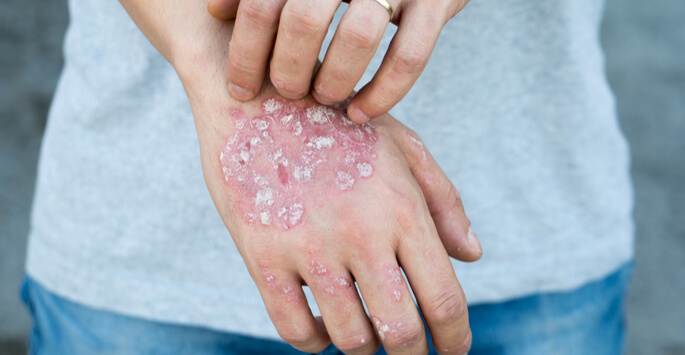
Psoriasis is a chronic autoimmune disorder that primarily affects the skin. It often runs in families. While anybody can develop this disorder, it usually first appears in patients who are between 15 and 35 years old.
What Is Plaque Psoriasis?
There are several different types of this disorder, and plaque psoriasis is by far the most common. It affects at least 80 percent of patients. In plaque psoriasis, the patient’s skin cells go through their life cycle abnormally fast, and the patient’s body can’t get rid of the resulting dead skin cells. They, therefore, pile up and form thick, raised, scaly patches called plaques. The plaques can be any size. While they can develop anywhere, they are most commonly found on the following places:
- Scalp
- Lower back
- Elbows
- Knees
Plaques are often red and itchy. They can also cause pain, and they can crack and bleed.
Other Types
Guttate psoriasis is the second most common type of the disorder, and it affects about ten percent of patients. It affects mainly children and young adults and can develop after a case of strep throat. The patient develops small lesions that look like dots.
Pustular psoriasis most commonly appears on the hands and feet. The patient develops white pustules surrounded by reddened skin.
Inverse psoriasis develops in places where the patient has creases or folds of skin, like in their groin or under their arm. The affected skin is shiny and red. Patients with inverse psoriasis also often have another type of the disorder as well.
How Severe Is the Disorder?
The disorder ranges in severity. Our dermatologists use two ways to measure the severity of a patient’s disorder: its impact on the patient’s life and the body surface area (BSA) affected. In the latter method, the doctor calculates the percentage of the patient’s skin covered by psoriasis. One percent equals an area about the size of the patient’s hand. If less than three percent of the patient’s body is affected, they have a mild case. If over ten percent is affected, the patient has a severe case. If between three and ten percent is affected, the patient has a moderate case.
If you have this disorder and you would like to learn about treatment options available at Dundee Dermatology in West Dundee, IL, contact us today to schedule your consultation!
